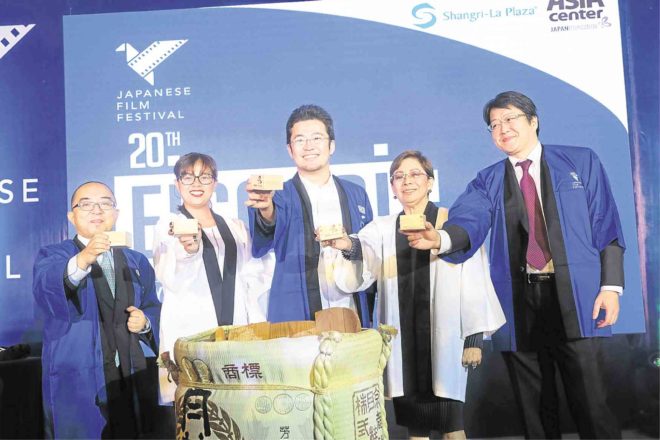
Kyoto, the hometown of rising filmmaker Ryota Nakano, is a bastion of Japan’s most revered traditions. But the city’s romance with the past has had little effect on its resident cineaste, who fears stagnation had affected the island nation’s film industry.
“I see no growth,” said Nakano, a freshman screenwriter and director who views himself as part of a wave of global-minded filmmakers ready to jumpstart Japanese cinema.
If one movie could capture the energy of this new generation, Nakano’s most recent, “Her Love Boils Bathwater,” would be a credible contender. After strong runs in Tokyo, Busan and Montreal, it headlined Eiga Sai film festival’s grand launch on July 6 at Shangri-la Plaza Mall in Manila.
“Japanese movies are created for the Japanese audience. They’re not aiming bigger,” Nakano told the Inquirer.
He is more interested in crafting films that resonate across borders than he is in making films with a definitively Japanese flavor.
Nakano is the special guest director at this year’s Eiga Sai, which is organized annually by the Japan Foundation and runs until Aug. 29.
Like Nakano, the festival is mounting an aggressive effort to broaden the appeal of Japanese film as it marks its 20th anniversary in the Philippines by adding Bacolod and Iloilo to its venues and dubbing three of this year’s films in Tagalog.
This reconciliation of cultures was no less apparent at Eiga Sai’s gala night, which culminated in a performance featuring four members of contemporary dance company Airdance, who choreographed it from scratch after watching Nakano’s “Bathwater.”
“[It’s] such a good movie because people can really relate, so we tried to bring out those elements and put it into the dance,” Airdance’s senior choreographer Mia Cabalfin said.
“Whatever the musician feels from our dancing, they will adjust,” artistic director Rhosam Prudenciado Jr. said.
Cabalfin added that this improvisation made the production “rich, deep and special.”
The result was a 10-minute spectacle of both dance and live music, a blend of Japan’s traditional koto and the Philippines’ kulintang, set against the backdrop of beats played by DJ Paolo Garcia and visuals from Nakano’s “Bathwater.” It was a seamless marriage of Filipino and Japanese elements fitting Nakano’s cross-cultural vision.
The director’s global ambitions were aided by a budget he said was “more than 10 times” his usual. As his first commercial film, however, he also faced pressure to ensure his artistic choices would be palatable to a bigger audience.
He found his footing by falling back onto a familiar theme: family.
Nakano lost his father when he was 6 and was raised by a whole cast of characters that included his mother, elder brother, cousins and grandparents.
“When you say family, you’re related by blood… But I wondered, What if you’re not? Can you still be a family?” Nakano said.
He orchestrates the underlying tension in “Bathwater” by diving deep into this question through Futaba, a mother diagnosed with stage 4 cancer making an 11th-hour attempt to reunite her family.
“This movie is about the relationship between mother and daughter, so, even before filming, I had the actors text each other every day in their role. The daughter would go ‘Okaasan (mommy), this is what happened to me today,’ and they’d have this text conversation within their roles,” Nakano said.